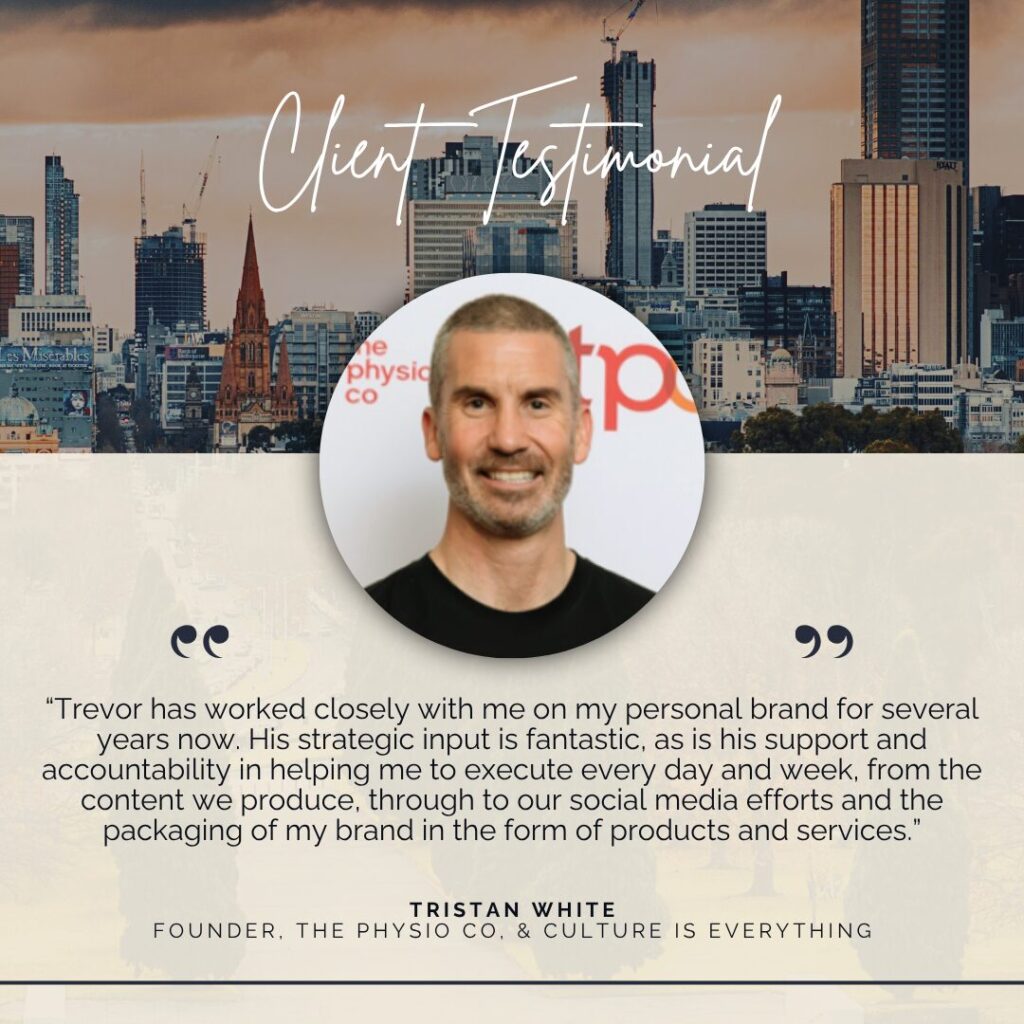
“How do I build more trust with my audience, especially online?”
It’s a valid question, especially as the word ‘trust’ is thrown around with reckless abandon these days in business and marketing circles.
We all know that trust is essential for influence, but too often, people default to vague answers like “just show up consistently” or “add value.”
Important, yes … but let’s get more specific.
What we’re really talking about here is the concept of trust signals.
What are trust signals?
At their core, trust signals are visible cues that reduce perceived risk and build belief in your professional credibility.
In marketing, we see them all the time:
- Review stars
- Client logos
- Secure checkout badges
But it’s important to note: Trust signals aren’t just for eCommerce sites or landing pages where the aim of the game is a commercial transaction. They’re essential in personal branding and authority building too!
WORTH NOTING: Trust signals function as heuristics, or cognitive shortcuts, allowing people to make quick, often subconscious decisions about who or what to trust. This aligns closely with Daniel Kahneman’s description of what he calls ‘System 1 thinking’ and the use of mental shortcuts (see Thinking, Fast and Slow).
Why trust signals matter for experts, thought leaders, and business owners
Whether you’re trying to:
- Land speaking gigs
- Win new clients
- Get quoted in the media
- Or simply grow your audience on LinkedIn
… you’re asking people to believe in you.
To follow your ideas. To engage. To act.
This is where trust signals come into the equation.
Trust signals help remove the friction.
They answer the unspoken questions your audience has:
- “Is this person legit?”
- “Do others trust them?”
- “Do they know what they’re talking about?”
Here are 7 ways to bring trust signals to life for your personal brand
Okay, let’s get tactical. Here are some ideas how to embed trust signals throughout your content, platforms, and interactions:
1. Independent 3rd-party validation (i.e. let others say it for you)
- Showcase legit media features (“As seen in…”)
- Mention podcast guest spots
- Highlight speaking engagements
- Share industry awards or recognitions (if relevant and credible)
PRO TIP: Add a “Featured In” strip on your website or LinkedIn profile.
- Client testimonials
- LinkedIn recommendations
- Screenshot snippets of praise or positive feedback
- Metrics that matter (“5,000+ subscribers”, “10 years consulting in this space”)
PRO TIP: Weave social proof into your posts, not just in isolated testimonial pages.

3. Content depth & consistency (i.e. let your ideas build the trust)
- Publish thoughtful, original content on a regular basis
- Share case studies, frameworks, and insights that demonstrate expertise
- Create signature models or methodologies that become part of your personal brand lexicon (I do this by publicly sharing key elements of my Credible Authority Method and Personal Brand Sovereignty frameworks)
PRO TIP: Build a recurring content series to create expectation and rhythm with your audience.
4. Professional presentation (i.e. how you show up matters)
- Invest in clean design for your website and social profiles
- Maintain a clear and consistent voice and message across channels
- Use professional photos/headshots (unaltered by AI) – that said, I’m also a fan of strategically using unvarnished ‘selfies’ in social media posts
PRO TIP: Conduct a quarterly/half-yearly ‘personal brand audit’ across your digital footprint.

5. Proof of results (i.e. outcome-based trust)
- Share client wins (anonymised if necessary)
- Highlight transformation stories/case studies (identify clients if possible, but understand this can be difficult in some industries)
- Post before-and-after examples (where relevant)
PRO TIP: Turn these into short authority-building LinkedIn posts or newsletter segments or YouTube videos.
6. Values & transparency signals (i.e. character-based trust)
- Share your personal philosophy and why you do what you do (be upfront about your values)
- Be open about your journey, including missteps or lessons learned
- Take public stands on issues relevant to your work (where appropriate)
- Use social media to take people ‘behind the velvet rope’ of your business (video works especially well here)
PRO TIP: Publish a values-driven “About Me” post or create a ‘Personal Brand Manifesto’ and share on your website/LinkedIn profile.
7. Audience engagement (i.e. behaviour-based trust)
- Respond to comments and DMs on social media
- Engage with other people’s content meaningfully
- Shout out clients, collaborators, and peers
- Be visible in your community, digitally and in real life – shine the spotlight on others!
PRO TIP: Make a weekly habit of publicly acknowledging others in your network/digital neighbourhood.
FINAL THOUGHT: Trust signals compound over time
The magic happens when you layer these signals together.
For example:
You share a podcast appearance (third-party validation), write and link to a blog post that deepens the topic (content depth), include a client quote who benefited from the approach (social proof), and package it all with clean visuals (professional presentation).
That’s trust-building in action!
Speaking of which, let’s take ACTION! Here’s your next step:
Pick one or two trust signals you’re currently under-leveraging, and start weaving them more intentionally into your content and platforms.



Leave a Reply